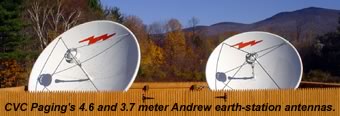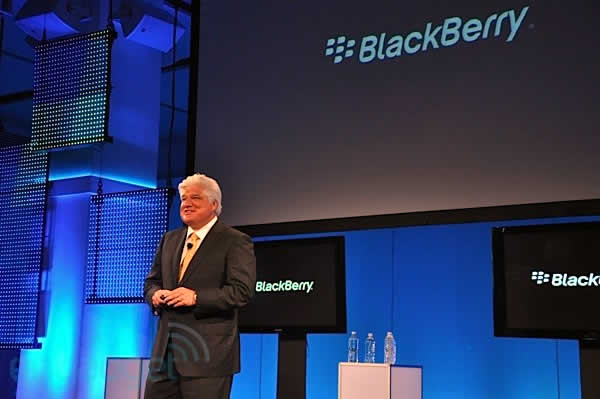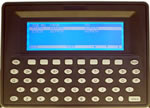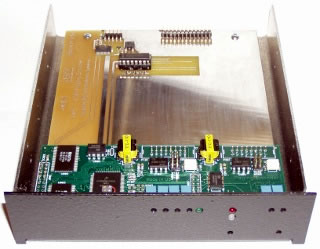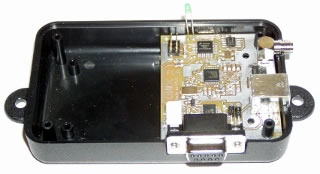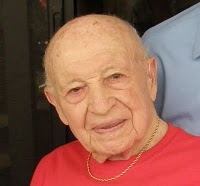BloostonLaw Telecom Update Published by the Law Offices of Blooston, Mordkofsky, Dickens, Duffy & Prendergast, LLP [Portions reproduced here with the firm's permission.] www.bloostonlaw.com |
| Vol. 14, No. 15 | April 13, 2011 |

BloostonLaw Attorney Uses Twitter To Help Disaster Victims It’s National Volunteer Week, and BloostonLaw attorney Cary Mitchell is using Twitter and other social media to help monitor crisis situations around the globe and to route information about urgent needs to appropriate first responders. Cary’s participation as a co-founder of a social media crisis-response organization was featured in a front-page article in USA Today on April 12. Cary worked as a volunteer at the Embassy of Haiti in Washington where he helped organize a team of volunteers and members of the Greater Washington Haiti Relief Committee in establishing an integrated crisis information web site and volunteer portal to serve the needs of the Haitian Diaspora in the aftermath of last year’s earthquake. He subsequently worked with former American Red Cross volunteers and the founding Chief of the United Nations’ Central Emergency Response Fund Secretariat (CERF) to establish an international NGO and 501 (c)(3) nonprofit organization known as Humanity Road (see www.humanityroad.org), whose mission is to provide timely and accurate aid information needed in times of crisis. During 2010, Humanity Road volunteers from 13 countries and 17 states within the USA contributed thousands of volunteer hours supporting disaster response for 53 events and three disaster drills. This support was delivered online in the form of public service announcements in social media such as Twitter. Volunteers also assisted with identifying urgent needs, relaying local guidance during an event, as well identifying and verifying critical information within online databases and crowd-maps. Major events supported during 2010-11 include the earthquake and cholera outbreak in Haiti, Hurricane Agatha and a subsequent Volcano eruption in Central America, the Gulf Coast oil spill, earthquakes in New Zealand and monitoring online communications and contributing reports to a map of the Libyan crisis for the U.N.’s Office for the Coordination of Humanitarian Affairs (OCHA). Clients interested in helping with such relief efforts should contact Cary Mitchell (cary@bloostonlaw.com.). |

INSIDE THIS ISSUE - FCC adopts “data-roaming rule for wireless carriers.
- Pole attachment rules amended to fit broadband.
- FCC adopts “signal booster” NPRM to improve coverage.
- FCC adopts rules, FNPRM to halt VRS program abuse.
- FCC says magicJack access charges are unlawful.
|
FCC Adopts “Data-Roaming” Rule For Wireless Carriers The FCC, at last week’s open meeting, adopted a Second Report & Order (R&O) that requires facilities-based providers of commercial mobile data services to offer data roaming arrangements to other such providers on commercially reasonable terms and conditions, subject to certain limitations. The FCC said that widespread availability of data roaming capability will allow consumers with mobile data plans to remain connected when they travel outside their own provider’s network coverage areas by using another provider’s network, and thus promote connectivity for and nationwide access to mobile data services such as e-mail and wireless broadband Internet access. This order provides some relief to small and rural carriers that have encountered certain larger carriers taking the position that data is not included in FCC-mandated roaming obligations. The problems created by such position will only be exacerbated by the proposed merger of T Mobile into AT&T, which will remove one of the last sources of competitive pressure on nationwide carriers when it comes to roaming rates. The FCC also believes the R&O serves the public interest by promoting investment in and deployment of mobile broadband networks, consistent with the recommendations of the National Broadband Plan. The new data-roaming rule will apply to all facilities-based providers of commercial mobile data services regardless of whether these entities are also providers of commercial mobile radio service (CMRS). To resolve disputes arising pursuant to the data-roaming rule, the FCC said that parties may file a petition for declaratory ruling under Section 1.2 of the Commission’s rules or file a formal or informal complaint under the data-roaming rule, depending on the circumstances specific to each dispute. The FCC said the overwhelming majority of commenters in the proceeding favored adoption of roaming rules to promote the availability of commercial mobile data services. These commenters included a wide variety of regional and rural providers and two nationwide mobile service providers, as well as consumer interest organizations and equipment and software manufacturers. They argued that to be competitive in the commercial mobile marketplace and to meet the demands of their customers, it is critical that providers be able to provide data roaming services to their customers, particularly given the transition of mobile wireless to a more data-centric mobile marketplace. In this regard, the commenters observed that the volume of traffic for mobile services is shifting away from inter-connected services to non-interconnected services, and they highlighted the fact that data usage has risen sharply over the past few years and will continue to do so as a result of the increased use of smartphones and the increased data consumption per device. These commenters also asserted that adoption of a data roaming requirement is necessary to ensure the nationwide seamless connectivity to mobile services that consumers have come to expect. They contended that such a requirement is necessary to ensure continued investment and innovation by existing providers to expand and upgrade broadband data networks, as well as by new entrants seeking to provide mobile broadband services. Further, they asserted that providers with data roaming arrangements will continue to have the necessary and appropriate incentives to invest in and expand their networks in order to reduce their payments for data roaming, to compete more effectively with larger providers in areas where their customers roam substantially, and to fulfill regulatory buildout obligations. Given increasing consolidation and other constraints, roaming arrangements for commercial mobile data services are often difficult to obtain, and when available, are offered on less-than-favorable reasonable terms and conditions. By contrast, only AT&T and Verizon Wireless opposed the Commission’s adoption of a data roaming requirement, arguing that providers are already able to obtain nationwide coverage through data roaming arrangements without a regulatory requirement. AT&T and Verizon Wireless also asserted that a roaming obligation will discourage investment and lead to less efficient spectrum use by both roaming providers and host providers, particularly in rural areas. The FCC obviously did not agree with AT&T and Verizon Wireless. As noted earlier, the R&O will require that facilities-based providers of commercial mobile data services offer data roaming arrangements to other such providers on commercially reasonable terms and conditions, subject to certain limitations. The FCC determined that the data roaming rule should apply to any facilities-based carrier that provides mobile data services to its own subscribers using a technology of comparable quality. In establishing this rule, the FCC said it sought to balance various competing interests, and found that it is appropriate to specify certain grounds on which providers of commercial mobile data services can reasonably refuse to offer a data roaming arrangement. The FCC also clarified that providers of commercial mobile data roaming services are permitted to negotiate commercially reasonable measures to safeguard quality of service against network congestion that may result from roaming traffic or to prevent harm to their networks. For purposes of data roaming, the FCC defines a “commercial mobile data service” as any mobile data service that is not interconnected with the public switched network but is (1) provided for profit; and (2) available to the public or to such classes of eligible users as to be effectively available to the public. The scope of the current roaming obligation in Section 20.12 covers the CMRS providers’ provision of mobile voice and data services that are interconnected with the public switched network, as well as their provision of text messaging and push-to-talk services. The new rule will complement the current roaming obligation in Section 20.12 and cover mobile services that fall outside the scope of that obligation. The duty to offer data roaming arrangements on commercially reasonable terms and conditions is subject to certain limitations. In particular: (1) providers may negotiate the terms of their roaming arrangements on an individualized basis; (2) it is reasonable for a provider not to offer a data roaming arrangement to a requesting provider that is not technologically compatible; (3) it is reasonable for a provider not to offer a data roaming arrangement where it is not technically feasible to provide roaming for the particular data service for which roaming is requested and any changes to the host provider’s network necessary to accommodate roaming for such data service are not economically reasonable; and (4) it is reasonable for a provider to condition the effectiveness of a data roaming arrangement on the requesting provider’s provision of mobile data service to its own subscribers using a generation of wireless technology comparable to the technology on which the requesting provider seeks to roam. Commissioner Robert McDowell dissented, stating that “even though the order attempts to explain otherwise, in mandating the provision of data roaming and establishing a means for dispute resolution that includes adjudicating terms and rates, my colleagues in the majority are, in essence, imposing a Title II common carrier regulatory regime in violation of Title III of the Communications Act and contrary to Commission precedent.” McDowell added that “the effort to justify characterization of today’s action as something other than a common carriage decision is understandable, for the law compels it. The problem, however, is that data roaming is what the law sees as a ‘private mobile service.’ In other words, the service is considered a ‘mobile service’ under the Act, but not a ‘commercial mobile service or the functional equivalent of a commercial mobile service.’ Because data roaming is not a commercial mobile service, Section 332(c)(2) of the Act prohibits the Commission from subjecting the provision of data roaming to common carrier regulation. Under this rubric, the Commission in 2007 unanimously concluded that provision of wireless broadband Internet access service is an ‘information service’ and that data roaming service must be ‘free from common carrier regulation.’” Commissioner Meredith Baker dissented for similar reasons. She also said: “While I do not vote for this Order, I nonetheless call on all parties, both those requesting roaming and host networks, to treat each request for data roaming services seriously and in good faith. With or without the “regulatory backstop” envisioned in this Order, it is ultimately incumbent upon our nation’s mobile carriers to work together to develop the data roaming environment that meets the needs and expectations of each of us as we increasingly come to rely upon mobile data for all our communication needs.” BloostonLaw contacts: Hal Mordkofsky, John Prendergast, and Cary Mitchell. Pole Attachment Rules Amended To Fit Broadband FCC Also Adopts Broadband Deployment NOI At its April 7 open meeting, the FCC adopted a Report & Order and Order on Reconsideration that amended its pole attachment rules to streamline access and reduce costs for attaching broadband lines and wireless antennas to utility poles. Based on successful models in a number of states, the FCC said its Pole Attachments Order balances the need for timely access to poles with the need to ensure the safety of workers and the reliability of our electric grid. The FCC also issued a Notice of Inquiry (NOI) into how the Commission can work with other government entities and the private sector to improve policies for access to other physical spaces where wired and wireless broadband can be deployed, including roadways and other rights of way, and locations for wireless facilities. As part of its strategy to expand access to robust, affordable broadband, the National Broadband Plan recommended that the FCC take steps to reduce the cost and time required for network providers to access utility poles and rights of way. Pole Attachments: The FCC found that the lack of timelines for access to poles, the resulting potential for delay in attaching broadband equipment to poles, and the absence of adequate mechanisms to resolve disputes creates uncertainty that deters investment in broadband networks. In addition, widely varying and inefficiently high pole rental rates – from an average of $7 per foot per year for cable companies to $20 or more for some telephone companies – further discourages broadband deployment. To address these concerns, the FCC is reforming its pole attachment rules for the first time since the 1990s. The FCC said the new rules fairly compensate utility pole owners for use of their poles and toughen penalties for unauthorized attachments, which will deter potentially dangerous, unauthorized attachments on poles. The revised FCC rules: - Set a maximum timeframe of 148 days for utility companies to allow pole attachments in the communications space, with a maximum of 178 days allowed for attachments of wireless antennas on pole tops, and an extra 60 days for large orders;
- Set the rate for attachments by telecommunications companies at or near the rate paid by cable companies;
- Confirm that wireless providers are entitled to the same rate as other telecommunications carriers;
- Allow ILECs, which are not covered by the rate schedule, to file complaints with the FCC for relief from unreasonable rates, terms, and conditions;
- Clarify that a utility denying a request for attachment must explain the specific capacity, safety, reliability, or engineering concern justifying denial;
- Encourage negotiated resolution of disputes and pre-planning and coordination between pole owners and attachers, which will be taken into account in any enforcement action; and
- Remove the cap on penalties for unauthorized attachments.
Accelerating Broadband Deployment Inquiry: In a separate but related matter, the FCC launched a comprehensive inquiry into how it can work with its state, local, Tribal, and federal partners to improve policies for access to rights of way and wireless facility siting. The broad NOI seeks comment and data regarding challenges and best practices, dispute mediation, and educational efforts, and examines the need for policy guidelines or rules. The FCC’s NOI builds on the record begun during the FCC’s February 9 Broadband Acceleration Conference and the work of the Commission’s Technological Advisory Council. Comments in this WC Docket No. 11-59 proceeding will be due 60 days after publication of the item in the Federal Register, and replies will be due 45 days thereafter. BloostonLaw contacts: Hal Mordkofsky, Ben Dickens, Gerry Duffy, and John Prendergast. FCC Proposes Signal Booster Rules To Improve Coverage The FCC has adopted a Notice of Proposed Rulemaking (NPRM) to facilitate the development and deployment of “signal boosters,” which hold great potential to empower consumers in rural and underserved areas to improve their wireless coverage in their homes, at their jobs, and when they travel by car, recreational vehicle, or boat. On the one hand, the proposed signal booster rules could make it easier to improve signal coverage in rural communities and other areas with marginal coverage. On the other hand, the new rules places the ability to use signal boosters directly into the hands of consumers, creating the potential for inadvertent harmful interference being caused to wireless systems if appropriate safeguards are not adopted. Although by one measure, the FCC said, 99.6% of the nation’s population is served by one or more mobile voice providers, and more than 98% of the nation’s population can now receive “advanced” or “3G” wireless services, coverage gaps exist within and at the fringes of those service areas and continue to pose a problem for residents, businesses, public institutions, visitors, and public safety first responders, particularly in rural areas. Signal boosters are part of the solution to addressing coverage gaps in rural areas, the FCC believes. It said signal boosters can also mitigate service gaps in difficult-to-serve in-building environments such as in office buildings where people work, in health care facilities where doctors and other health care personnel need reliable communications, and on educational campuses where students want access to cutting edge wireless service offerings. In addition, signal boosters can provide public safety benefits, for example, by enabling the public to connect to 911 in areas where wireless coverage is deficient or where an adequate communications signal is blocked or shielded. The regulatory framework for signal boosters proposed in the NPRM is one element in a set of initiatives designed to promote deployment of mobile voice and broadband services in the United States. The FCC said that well-designed, properly operating, and properly installed signal boosters have the potential to improve consumers’ wireless network coverage without harming commercial, private, and public safety wireless network performance. Malfunctioning, poorly designed, or improperly installed signal boosters, however, may harm consumers by blocking calls, including E-911 and other emergency calls, and decreasing network coverage and capacity. The regulatory framework proposed in this NPRM seeks to create appropriate incentives for carriers and manufacturers to collaboratively develop robust signal boosters that do not harm wireless networks. The NPRM proposes a new regulatory framework authorizing individuals and entities to operate “consumer signal boosters” provided the devices comply with: (1) all applicable technical and radiofrequency (RF) exposure rules, and (2) a set of parameters aimed at preventing and controlling interference and rapidly resolving interference problems should they occur. The NPRM also proposes revisions to the rules governing signal boosters used for private land mobile services. In this proceeding, the FCC proposes to amend Parts 1, 2, 22, 24, 27, 90, and 95 of its rules to adopt new technical, operational, and coordination parameters for fixed and mobile signal boosters. In the NPRM, the FCC addresses three petitions for rulemaking filed by Bird Technologies, Inc., the DAS Forum (a membership section of PCIA – the Wireless Infrastructure Association), and Wilson Electronics, Inc., and a petition for declaratory ruling filed by Jack Daniel DBA Jack Daniel Company, all of which relate to signal boosters. The NPRM proposes to authorize individuals to use fixed and mobile consumer signal boosters under Part 95 subject to certain requirements. The proposed rules would not apply to femtocells. The FCC seeks comment on: - Whether to require registration with a national signal booster clearinghouse prior to operation.
- The treatment of existing signal boosters.
- Facilitating the near-term availability of new, compliant consumer signal boosters by:
1. Within 30 days of the effective date of the rules, requiring that all applications for equipment authorization for signal boosters demonstrate compliance with the new rules; and, 2. Within 6 months of the effective date of the rules, requiring that devices marketed or sold in the United States comply with the new rules.
With respect to Part 90 Private Land Mobile Radio (PLMR), non-consumer signal boosters operated by licenses, revise the technical and operational requirements aimed at preventing interference. BloostonLaw contacts: Hal Mordkofsky, John Prendergast, and Richard Rubino. FCC Says magicJack Access Charges Are Unlawful The FCC has granted in part, and dismissed without prejudice, various AT&T claims in a formal complaint against YMax Communications regarding interstate switched access charges. YMax is able to participate in the transmission of the telephone calls only through its working relationship with its close affiliate, MagicJack, L.P. AT&T asserted that YMax has violated the Communications Act by assessing interstate switched access charges that are not authorized in its federal tariff. YMax is a competitive local exchange carrier (CLEC) which does not provide any physical transmission facilities connecting it to the premises of any non-carrier/non-ISP [Internet service provider] persons or entities. YMax has no customers who purchase local exchange service from YMax’s state tariffs. YMax does not assess or collect fees or charges associated with the Universal Service Fund (USF). YMax does not assess or collect any End User Common Line (EUCL) charges. YMax does not have any present capability to effectuate the selection of a preferred interexchange carrier (PIC) and thus does not assess or collect any PIC charges. AT&T’s complaint focuses on interstate switched access charges that YMax billed AT&T for two types of calls: 1) calls from an AT&T long-distance customer to a “Called Party” (i.e., “1+” calls); and 2) calls from a “Calling Party” to an AT&T toll-free long-distance service customer (i.e., “8YY” calls). The FCC said that “Called Party” means the person or entity that received an interexchange (1+) call from an AT&T long-distance service customer for which YMax has billed terminating switched access charges to AT&T; and “Calling Party” means the person or entity that placed an interexchange call to an AT&T toll-free (8YY) customer for which YMax has billed originating switched access charges to AT&T. MagicJack, L.P. markets and sells for $39.95 a device called the magicJack®, which provides the ability to use the Internet to make and receive calls throughout most of North America. The magicJack device itself consists of a USB “dongle” on one end that plugs into a computer’s USB port, and an RJ-11 telephone jack on the other end into which an ordinary landline telephone can be plugged. MagicJack, L.P. relies on YMax to obtain telephone numbers and interconnection to the public switched telephone network (PSTN) for magicJack purchasers. The FCC said the record indicates that virtually all of the calls at issue involved the use of a MagicJack device. The FCC said the fundamental problem appears to be that YMax chose to model its Tariff on common language in LEC access tariffs, even though the functions YMax performs are very different from the access services typically provided by LECs. As a result, YMax’s Tariff fails to unambiguously describe the kinds of services and functions that YMax performs with regard to the traffic at issue. As a result, the FCC held that YMax has violated sections 203(c) and 201(b) of the Act regarding all of the switched access charges in dispute. In particular, YMax’s Tariff does not authorize any of the switched access charges in dispute, because the Called/Calling Parties are not “End Users” as defined by the Tariff. In addition, the Tariff does not authorize either of the two categories of switched access charges in dispute — End Office Switching and Switched Transport — because YMax provides no “termination” of “End User station loops” and “end user lines,” as its Tariff requires. Accordingly, the FCC granted this portion of AT&T’s Complaint. Because the Commission found YMax’s charges unlawful, it said it need not address AT&T’s other charges, which include issues regarding the intercarrier compensation obligations, if any, associated with Voice over Internet Protocol (VoIP) traffic. The FCC noted that such issues have been raised in another proceeding. The FCC’s ruling leaves YMax in a position where it may find itself responding to claims from carriers other than AT&T that have been paying terminating access charges to magic Jack users. The ruling, however, stops short of preventing all CLECs from collecting access charges, and leaves the door open for companies like YMax to collect access charges, depending on how they write their tariffs. BloostonLaw contacts: Ben Dickens, Gerry Duffy, and Mary Sisak. FCC Adopts Rules To Halt Video Relay Program Abuse The FCC has adopted a Report & Order (R&O) designed to eliminate the waste, fraud and abuse that has plagued the video relay service (VRS) program. In an accompanying Further Notice of Proposed Rulemaking (FNPRM), the Commission asked for public comment on proposed modifications to the current FCC certification procedures used to determine which companies may provide Internet-based telecommunications relay service (TRS). VRS enables persons who use American Sign Language (ASL) to communicate with other individuals who do not know ASL through a broadband connection using a video link. A communications assistant (CA) interprets (relays) the conversation back and forth between the parties in sign language and voice. The Commission said its actions are intended to eliminate illegitimate payments from the TRS Fund to providers, ensure that only qualified providers of service are permitted to receive compensation from the Fund, and enable the Commission to improve its oversight of provider operations to achieve better compliance with the TRS rules. Report and Order In addition to annual VRS audits, new record keeping requirements and updated procedures for dispute resolutions related to payment claims the FCC’s comprehensive reforms: - Require that VRS providers submit a statement describing the location and staffing of their call centers twice a year, and a notification at least 30 days prior to any change in the location of such centers;
- Prohibit VRS CAs from relaying calls from their homes and prohibit VRS providers from tying minutes or calls processed by a CA to compensation provided;
- Prohibit compensation for VRS calls that originate from IP addresses that indicate the individual initiating the call is located outside of the United States, with the exception of callers who pre-register with their default provider for a specified time and location of travel;
- Prohibit compensation for VRS calls for remote training when the service provider is involved in any way with such training (e.g., sponsors, promotes or hosts such training);
- Prohibit VRS CAs from using visual privacy screens, and requires that CAs terminate a VRS call, after providing a warning announcement, if either party to the call: (1) enables a privacy screen or similar feature for more than five minutes, or (2) is unresponsive or unengaged for more than five minutes, unless the call is to 9-1-1 or one of the parties is on hold;
- Require automated record keeping of TRS minutes submitted to the Fund;
- Require that VRS be offered to the public only in the name of the provider eligible for compensation from the Fund and, when sub-brands are used, that these identify such eligible provider; requires that calls to any brand or sub-brand of VRS be routed through a single URL address for that brand or sub-brand;
- Prohibit revenue sharing agreements for CA or call center functions between entities eligible for compensation from the Fund and non-eligible entities;
- Prohibit compensation on a per-minute basis for marketing and outreach costs performed through a subcontractor where such services utilize VRS;
- Adopt whistleblower protection rules for current and former employees and contractors of TRS providers.
Further Notice of Proposed Rulemaking The Commission seeks public comment on proposals to: - Require that all Internet-based TRS providers be certified by the Commission to become eligible to receive compensation from the TRS Fund;
- Require new and renewing certification applicant providers to provide specific documentary evidence of their ability to comply with the TRS rules; The Commission may choose to conduct on-site visits as part of the certification process;
- Revise the provider’s annual report filings to the Commission to require further documentation that providers are in compliance with the Commission’s TRS rules;
- Clarify what types of changes trigger a provider’s obligation to notify the Commission that substantive changes in its TRS program have occurred;
- Require providers to seek approval from the Commission for voluntary interruption of their Internet-enabled relay service and to promptly notify the Commission after-the-fact when unforeseen service interruptions occur.
Comments on the CG Docket No.10-51FNPRM will be due 30 days after publication in the Federal Register, with reply comments due 15 days thereafter. BloostonLaw contacts: Ben Dickens, Gerry Duffy, and Mary Sisak. FCC SEEKS COMMENT ON WAYS TO FURTHER STRENGTHEN COMMUNICATIONS NETWORKS: The FCC, at last week’s open meeting, adopted a Notice of Inquiry (NOI) seeking public comment on ways to further strengthen the reliability and resiliency of America’s communications networks. The FCC said the recent earthquake and tsunami in Japan are unfortunate, tragic reminders of the importance of maintaining communications networks that offer reliable and resilient service in the face of significant equipment or system failure, particularly during major emergencies. The NOI builds on the FCC’s ongoing efforts to help ensure the reliability and resiliency of communications for the public, government, emergency responders, healthcare providers, and providers of other critical services such as electric power during natural or man-made disasters. In April 2010, the FCC sought comment on the survivability of communications networks when there is direct physical damage or failure of network equipment, or network overloads. The NOI seeks comment on four specific areas of concern: - Current efforts by industry to ensure continuity of communications service during major disasters;
- Existing reliability and resiliency standards for broadband communications networks;
- The FCC’s role in promoting the reliability, resiliency and continuity of communications services; and
- The FCC’s legal authority to act to ensure the reliability, resiliency and continuity of communications services.
The NOI also proposes to terminate two related proceedings—the Survivability Notice of Inquiry the Commission commenced in April 2010 and the Katrina Panel proceeding that it started in 2006. If terminated, the records from these two proceedings would be considered in the context of this proceeding, where appropriate. Comments on the FCC’s proposal to terminate the Survivability NOI and the Katrina Panel proceeding are due 30 days after publication of the NOI in the Federal Register. Comments on the PS Docket Nos. 11-60 and 10-92; and EB Docket No. 06-119 NOI proceeding are due July 7, and replies are due September 1. BloostonLaw contacts: Hal Mordkofsky, Ben Dickens, Gerry Duffy, and John Prendergast. FCC ESTABLISHES NATIONAL DEAF-BLIND DISTRIBUTION PROGRAM: The FCC has established a National Deaf-Blind Equipment Distribution Program (NDBEDP) to enable low-income individuals who are deaf-blind to access 21st Century communications services. The pilot program will help ensure that qualified individuals have access to the Internet, and advanced communications, including interexchange services and advanced telecommunications and information services. This action implements a provision of the Twenty-First Century Communications and Video Accessibility Act of 2010 (CVAA). The CVAA allocated $10 million annually from the Interstate Telecommunications Relay Service (TRS) Fund for this nationwide equipment distribution effort. The Commission concluded that the best approach would be to establish a two-year pilot program, with the option of extending this for a third year, so that the Commission can assess the most efficient and effective method of administering the NDBEDP on a permanent basis. Under the NDBEDP pilot program, the Commission will certify and provide funding to one entity in each state to distribute equipment to low-income individuals who are deaf-blind. The Commission will make the full amount of the authorized funding, $10 million, available for each year of the pilot program. Of this amount, the Commission will set aside up to $500,000 per year for national outreach efforts. Each state will initially receive a minimum initial funding allocation of $50,000, with the balance of the available funds allocated in proportion to each state’s population. Certified programs will have to submit documentation to support claims for reimbursement for NDBEDP equipment and related services, up to each state’s funding allocation. Certified programs must submit reports on their activities and expenses every six months, disclose potential conflicts of interest, and conduct annual independent audits. BloostonLaw contacts: Ben Dickens, Gerry Duffy, and Mary Sisak. FCC ORDER ATTEMPTS TO BALANCE TERRESTRIAL WIRELESS & MSS SPECTRUM NEEDS: The FCC has adopted a Report and Order (R&O) that attempts to balance terrestrial wireless and Mobile Satellite Service (MSS) spectrum needs. Contemplating that MSS spectrum will be used for terrestrial wireless services, the FCC also extended its secondary market leasing rules to any MSS spectrum used for terrestrial services pursuant to the Commission’s Ancillary Terrestrial Component (ATC) rules. The FCC noted that its National Broadband Plan recommended that 90 megahertz of spectrum allocated to MSS could be made available for terrestrial mobile broadband use, while preserving sufficient MSS capability to serve rural areas, public safety, and other important national purposes. In the R&O, the FCC: 1. Added co-primary Fixed and Mobile allocations to the MSS 2 GHz band, consistent with the International Table of Allocations. 2. Extended the existing secondary market “spectrum manager” spectrum leasing policies, procedures, and rules that currently apply to wireless terrestrial services to the use of MSS/ATC spectrum for the provision of terrestrial services.
The R&O pertains to Fixed and Mobile Services in the Mobile Satellite Service Bands at 1525-1559 MHz and 1626.5-1660.5 MHz, 1610-1626.5 MHz and 2483.5-2500 MHz, and 2000-2020 MHz and 2180-2200 MHz. BloostonLaw contacts: Hal Mordkofsky, John Prendergast, and Cary Mitchell. FCC PROVIDES GUIDANCE ON SCOPE OF ETCs’ OBLIGATIONS TO ADVERTISE USF SERVICES: The FCC has responded to a request from the Universal Service Administrative Company (USAC) for written guidance regarding the requirement, set forth in section 54.201(d)(2) of the Commission’s rules, regarding the scope of the obligation that each eligible telecommunications carrier (ETC) advertise services supported by federal universal service fund (USF) support mechanisms. Specifically, USAC requested guidance regarding whether ETCs “are required to separately list each [of the nine] supported service(s) enumerated in 47 C.F.R. § 54.101,” when advertising the availability of such services. After consideration of the filed comments in this proceeding and Commission precedent, the FCC determined that ETCs are not required to separately list each of the enumerated supported services in their advertisements. Section 254 of the Communications Act of 1934, as amended, provides that only carriers that have been designated as ETCs are eligible to receive federal universal service support. Section 214(e)(1)(B) requires ETCs to “advertise the availability of [supported] services and the charges therefore using media of general distribution.” Section 54.201(d)(1) of the Commission’s rules requires each ETC to “offer” the services identified in section 54.101 of the Commission’s rules, and section 54.201(d)(2) repeats the statutory requirement that the ETC “[a]advertise the availability of such services and the charges therefore using media of general distribution.” Nothing in the Commission’s rules require an ETC to separately identify each supported service in its advertisements. The nine supported services set forth in the Commission’s rules are, from the consumer’s perspective, all components of a single service: voice telephony service. Thus, when an ETC advertises the availability of voice telephony service that includes all of the supported services, the ETC is effectively advertising the availability of the enumerated supported services. Moreover, requiring ETCs to separately identify each supported service, including services like “dual-tone multi-frequency signaling or its functional equivalent” would likely serve little purpose other than to cause confusion for at least some consumers. The FCC said its “guidance” does not impose a separate duty to publicize the availability of Lifeline services. BloostonLaw contacts: Ben Dickens, Gerry Duffy, and Mary Sisak. FCC SEEKS COMMENT ON CONSUMERS’ “NEED FOR SPEED” IN INTERNET SERVICE: The FCC’s Consumer and Governmental Affairs Bureau (CGB) has issued a Public Notice asking for comments on the kinds of “need for speed” information that will be most useful to consumers in choosing their Internet service. “The marketplace for broadband service is a confusing one for consumers,” says CGB Bureau Chief Joel Gurin. “Most people don’t understand megabits-per-second in the way they understand miles-per-gallon.” Gurin notes that an FCC Survey last year found that 80 percent of people with broadband don’t even know what speed they’re getting from their service. “Broadband service providers recognize the problem, and have taken some good steps to educate consumers,” says Gurin. “This Public Notice will provide a way for internet service providers, the tech community, and the public to help develop clear guidelines that will help everyone understand how to get the service they need.” In the Public Notice, CGB notes that consumers may have very different needs for broadband service depending on what they use it for. Someone who uses the Web primarily for email, for example, may be well served by a smaller and less expensive service than an avid video viewer would need. Others, such as online gamers, may be especially concerned about factors like signal latency. Comments in this CG Docket No. 09-158 proceeding are due May 26, and replies are due June 16. BloostonLaw contacts: Ben Dickens, Gerry Duffy, and Mary Sisak. HOUSE VOTES TO OVERTURN “NET NEUTRALITY” RULES: The U.S. House of Representatives last week voted 240-179 to approve a resolution overturning the FCC’s “Net Neutrality” rules. According to Reuters, a similar measure has been introduced in the U.S. Senate and has 39 co-sponsors, but the White House said on Monday President Obama's advisers would recommend he veto any such resolution. Generally, the Net Neutrality rules require all broadband providers to publicly disclose network management practices, restrict broadband providers from blocking Internet content and applications, and bar fixed broadband providers from engaging in unreasonable discrimination in transmitting lawful network traffic (BloostonLaw Telecom Update, December 22, 2010). Also this past week, the U.S. Court of Appeals for the District of Columbia Circuit granted on Monday the FCC's motions to dismiss as premature lawsuits filed by Verizon Communications and MetroPCS Communications (BloostonLaw Telecom Update, January 26). Reuters reports that a Verizon spokesman said the company plans to file a second lawsuit following the traditional process for overturning rulemakings, which requires rules to first be published in the Federal Register. BloostonLaw contacts: Hal Mordkofsky, Ben Dickens, Gerry Duffy, and John Prendergast. RCA ASKS D.C. CIRCUIT TO REVIEW FCC’s USF RECLAMATION ORDER: The Rural Cellular Association (RCA) recently asked the U.S. Court of Appeals for the District of Columbia Circuit to review the FCC’s Order on reclaiming high-cost Universal Service Fund (USF) support. In the Order, the Commission took action to reclaim high-cost universal service support surrendered by a competitive eligible telecommunications carrier (ETC) when it relinquishes ETC status in a particular state. This change would reduce the overall cap on competitive ETC support in a state when a competitive ETC relinquishes its designation in the state, rather than redistributing the excess funding to other competitive ETCs in the state (BloostonLaw Telecom Update, January 2). RCA asserts that the FCC illegally and inappropriately changes distributions under the FCC's Universal Service Fund program. RCA objects to the Order on the grounds that it: (1) exceeds the FCC's statutory authority to collect and withhold program funds; (2) amends the FCC's rules without notice and an opportunity to comment, in violation of the Administrative Procedure Act, 5 U.S.C. § 553; and (3) is arbitrary, capricious, an abuse of discretion and otherwise inconsistent with the law. BloostonLaw contacts: Ben Dickens, Gerry Duffy, and Mary Sisak. This newsletter is not intended to provide legal advice. Those interested in more information should contact the firm. |



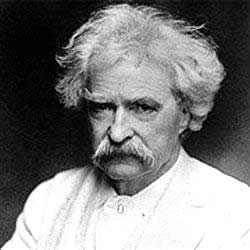





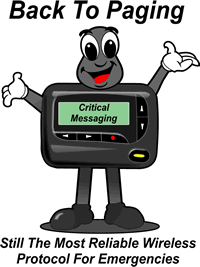








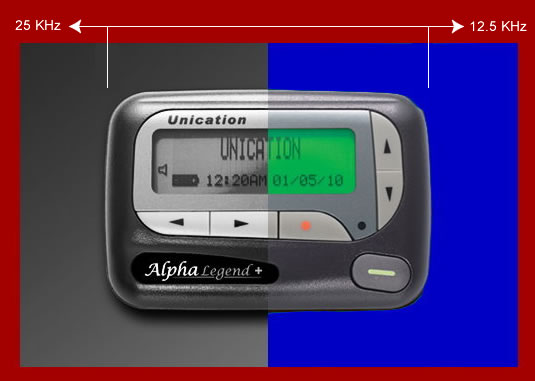
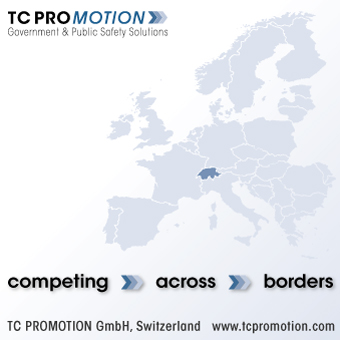




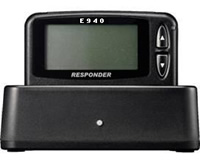


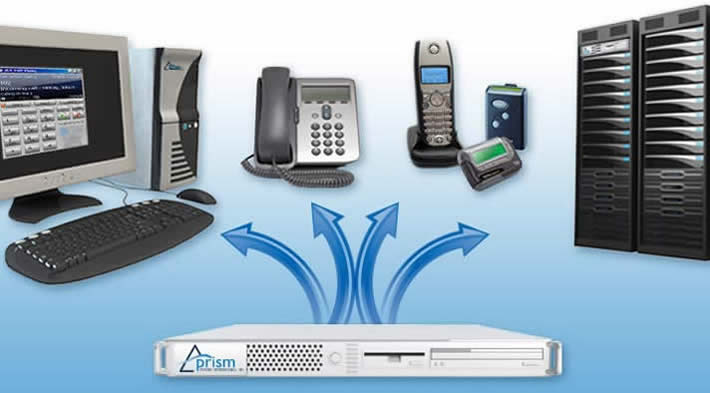

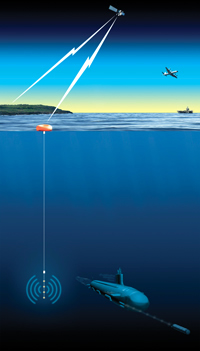 A new technology designed to communicate with submarines as they travel stealthily at great depths and speeds is now being looked at as a means to send messages to special operations divers and commands to unmanned underwater vehicles.
A new technology designed to communicate with submarines as they travel stealthily at great depths and speeds is now being looked at as a means to send messages to special operations divers and commands to unmanned underwater vehicles. The latest Deep Siren trial took place in March during the Navy’s ICEX (Ice Exercise 2011), a semi-annual event that serves as a test for submarine forces, which conduct operations in the Arctic. A base camp set up on an ice sheet used Deep Siren as a beacon to bring a Virginia-class submarine the USS New Hampshire (SSN 778) and the Sea Wolf-class USS Connecticut (SSN 22) to its location, according to the Navy Live, the service’s official blog.
The latest Deep Siren trial took place in March during the Navy’s ICEX (Ice Exercise 2011), a semi-annual event that serves as a test for submarine forces, which conduct operations in the Arctic. A base camp set up on an ice sheet used Deep Siren as a beacon to bring a Virginia-class submarine the USS New Hampshire (SSN 778) and the Sea Wolf-class USS Connecticut (SSN 22) to its location, according to the Navy Live, the service’s official blog. 
